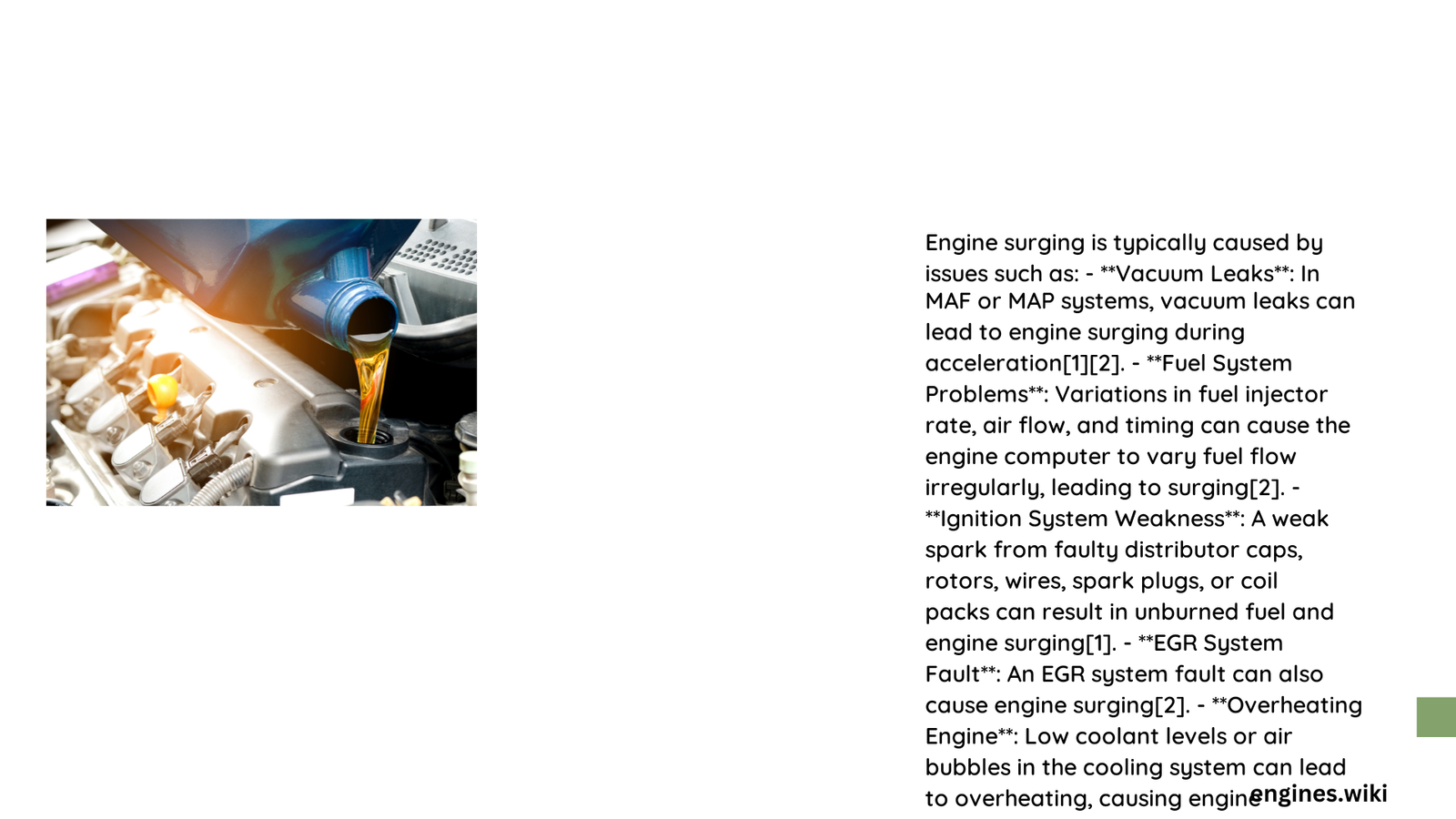Engine surging represents a complex mechanical phenomenon where an engine experiences unpredictable RPM fluctuations, causing inconsistent power delivery and potential performance degradation. Drivers often notice sudden speed changes, rough idling, and unexpected acceleration without direct throttle input. These symptoms can stem from multiple interconnected mechanical and electronic systems, requiring systematic diagnostic approaches to identify and resolve underlying issues effectively.
What Causes Engine Performance Instability?
Mechanical Factors Contributing to Engine Surge
Air Intake System Complications
- Restricted Air Filters: Accumulated debris prevents proper airflow
- Vacuum Leaks: Unmetered air disrupts precise air-fuel mixture
- Intake Manifold Damage: Compromised sealing causes irregular combustion
Fuel Delivery Disruptions
- Clogged fuel filters
- Failing fuel pumps
- Dirty or malfunctioning fuel injectors
- Inconsistent fuel pressure regulation
Electronic System Diagnostic Challenges
Sensor Performance Evaluation
| Sensor Type | Potential Malfunction | Impact on Engine |
|---|---|---|
| Mass Airflow Sensor | Inaccurate readings | Incorrect fuel mixture |
| Oxygen Sensor | Degraded performance | Poor combustion efficiency |
| Throttle Position Sensor | Erratic signal transmission | Unpredictable acceleration |
Comprehensive Troubleshooting Strategy
Step-by-Step Diagnostic Procedure
- Visual Inspection
- Check air intake system for visible damage
- Examine vacuum lines and connections
-
Inspect fuel injector cleanliness
-
Diagnostic Tool Assessment
- Use OBD-II scanner to retrieve error codes
- Monitor real-time sensor data
- Evaluate electrical system voltage
Advanced Diagnostic Techniques
Precision Measurement Methods
- Fuel pressure gauge testing
- Multimeter electrical system analysis
- Vacuum leak detection using specialized equipment
Prevention and Maintenance Recommendations
Regular Maintenance Checklist
- Replace air filters every 15,000-30,000 miles
- Clean fuel injectors annually
- Perform comprehensive electrical system diagnostics
- Monitor sensor performance during routine service
Technical Intervention Strategies
Professional Diagnostic Approaches
- Comprehensive system scan
- Detailed component testing
- Precision calibration of electronic control units
Cost-Effective Resolution Techniques
Budget-Friendly Troubleshooting
- DIY initial diagnostic procedures
- Targeted component replacement
- Systematic problem isolation
Expert Recommendations
Performance Optimization
- Use high-quality fuel and filters
- Maintain consistent maintenance schedule
- Address minor issues before they escalate
Conclusion

Understanding engine surging requires a holistic approach combining mechanical knowledge, electronic diagnostics, and systematic troubleshooting. By implementing comprehensive evaluation techniques and proactive maintenance strategies, vehicle owners can effectively mitigate performance inconsistencies and ensure optimal engine reliability.
